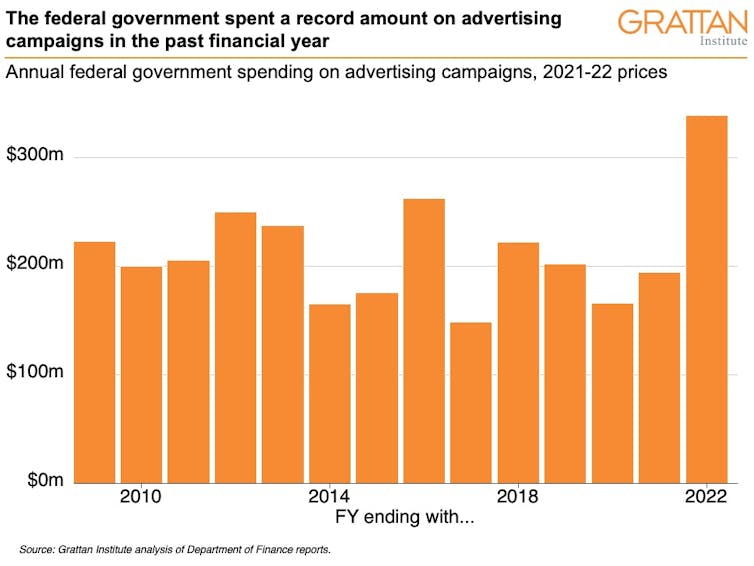The Morrison government spent a record amount on taxpayer-funded advertising, new data reveal
- Written by Kate Griffiths, Deputy Program Director, Grattan Institute

The federal government is a big spender in the advertising world, regularly spending more than major companies such as McDonald’s, Telstra and Coles. New data released on Friday by the Department of Finance shows that in the lead-up to the May 2022 election, the Coalition government’s advertising spend skyrocketed yet again.
The past financial year was the biggest year on record for taxpayer-funded advertising. The previous federal government spent A$339 million on taxpayer-funded advertising campaigns in 2021-22, well above the 25-year average of about $200 million a year.
In the first six months of 2022, the previous government was the biggest advertising spender in the country.





